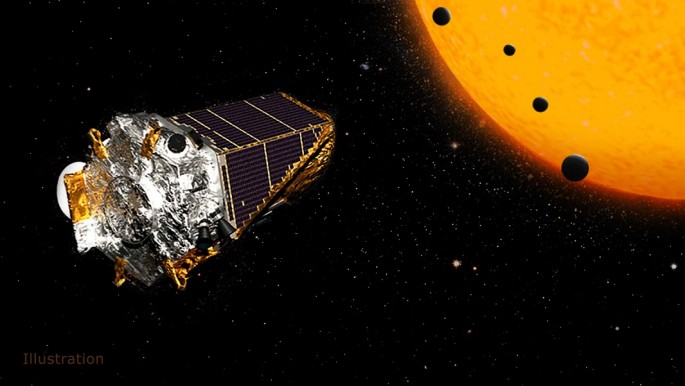Two new Earth like planets were recently discovered by NASA's Kepler Space Telescope which can potentially host life, according to scientists
This recent discovery yielded a total of 104 exoplanets where four of them are rocky planets, just like Earth that are all orbiting a red dwarf star known as K2-72 that can be described as dimmer and smaller in size to our sun. This star system is also located in the Aquarius constellation some 181 light years away from our planet.
Along with new observations from Kepler, scientists combined this with data from the W.M. Keck Observatory along with the Gemini telescopes in Mauna Kea, Hawaii and Chile, including the Automated Planet Finder at the University of California Observatories and the Large Binocular Telescope at the University of Arizona.
The team of scientists suggest that these four alien worlds are bigger than Earth at about 20 to 50 percent. The two rocky exoplanets of the four are known as K2-72c and K2-72e where they are located in the habitable zone of their stellar system, which means that the conditions are ideal for the planet to produce water, since they are at an ideal distance from their sun.
Scientists also reveal that these planets are located very near to their sun, in fact, closer than Mercury to the sun, however, since their sun is a red dwarf which is cooler and dimmer, it means that the habitable zone becomes much closer than our solar system.
The orbits of the two rocky exoplanets are also considered extremely short as K2-72c's year only lasts for 15 days which also means that this planet is more or less 10 percent warmer than temperatures on Earth.
On the other hand, K2-72e's year lasts for 24 days since it is more distant from the other rocky planet, and around six percent cooler than our planet.
Using a special technique, Kepler detected these exoplanets by observing the changes in brightness when they pass by in front of their star, which causes starlight to fade or become dimmer from the view of the space telescope.
To date, the Kepler Space Telescope has discovered a total of 2,300 planets beyond the solar system, since it began operations in March 2009.



























